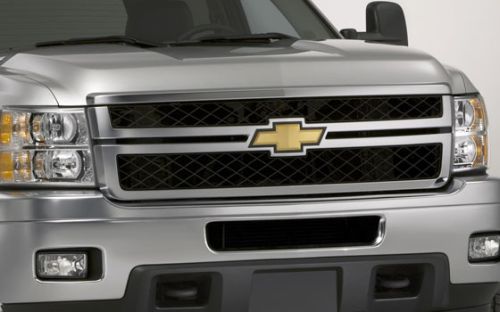Active Aerodynamics and Pickup Truck Fuel Economy
Benjamin | May 16, 2011 | Comments 6
Aerodynamics plays more of a role in automobile fuel efficiency than many people realize. In fact, when looking at vehicles as large as trucks even small tweaks to a body shape’s aero profile can pay dividends in terms of reducing gas consumption at highway speeds.
What Is Active Aero?
In the pursuit of better fuel economy, many automakers are turning to the field of active aerodynamics. Performance enthusiasts are most likely familiar with active aero applications in the racing and high-end sports car world, where spoilers deploy at certain speeds to help achieve greater straight-line stability, or air brakes pop up in order to haul racers down from triple digit speeds as quickly as possible. When it comes to fuel economy, active aerodynamics plays a more subtle, but no less important role in changing the flow of air around an automobile in order to maximize its slipperiness and reduce the amount of energy needed to keep it moving forward at a specific speed.
GM Active Aero
General Motors has been experimenting with a system which would reduce the amount of air entering the engine compartments of its full-size trucks while traveling on the highway. Typically, the amount of airflow hitting the truck’s radiator is far in excess of what is required for cooling purposes during normal driving, with the resulting drag caused by the airflow running up against the firewall and radiator working against the pickup from an efficiency standpoint.
The solution for GM has been a system of louvers on the grille which open and close based on the cooling needs of the truck, keeping air out while cruising and opening when at a stop or when towing. Ford has also looked at adding these types of louvers to its trucks, for the same purposes. It already offers the technology on some models of the Ford Focus compact car.
A Growing Field
The majority of aerodynamic work in the pickup world is still focused on making static improvements to the vehicle’s overall shape, including reducing the truck’s wake as it passes through the air, redirecting air flow over the cargo bed and lowering the amount of air that passes under the truck where it can encounter resistance from the chassis and suspension – not to mention the not-so-smooth underside of the cab and bed. Active aero, however, looks likely to play an increasingly important role as major automakers are forced to fight for every last MPG due to increasingly stringent federal regulations regarding corporate average fuel economy.
The question is, will the improvement in gas mileage justify the increased cost and complexity of an active aerodynamic system?
What do you think – would you buy this feature if it improved fuel economy enough to pay for itself?
How many times would it have to pay for itself to make it worthwhile?
Filed Under: Auto News



Interesting article Ben. I have noticed that ford and gm have been producing trucks with a very pronounced lip on the tailgate and wondered if it was to reduce drag. I think underbody aerodynamics is a largely unexplored area with a lot of potential.
There are a lot of guys tinkering with aerodynamics to see what improvements can be had. I have seen guys mod their trucks to the point where they get significantly better MPG’s but in the process they defeat the purpose of having a truck.
In response to your question about buying a modification if it paid for itself I think if a device has a break-even point of a year’s worth of driving then it would be worth it to me. The higher the cost of gas rises the more attractive the pay-off.
It depends on how much the technology costs vs how much fuel economy can be gained. I wouldn’t want it if it only amounted to a 1-2% increase, but >5% increase I might consider the added cost. Might even help in cold climates to keep the engine warm in extreme sub zero temps.
Ooooh I don’t know. Just another item that can break and cost you if the louvers stay closed. It really depends on how much gas is saved for this to work out.
agree, just another cheap part to not work and break. They’d be better off trying to decrease weight while reducing hp/torque numbers to what they were in the early 90’s, like 300 hp and 335lbs. of torque would be enough for me if a mfg. could get me 21-22 mpg hwy. consistently instead of 17-18 mpg like in my tundra. Reduced weight and less power (but still do-able) would easily net my 21 mpg hwy. I am looking for I would think.
Toby – I like the one-year break-even interval too.
Brian – Makes sense.
Mickey – Tough question, isn’t it? 🙂
mk – I think that’s going to be done too…the active aerodynamics feature is just another way to grab some sort of gain without doing a lot of design work.
[…] beneficial, another advancement in aerodynamics is in the Dodge Ram 1500. The new truck is using grille shutters to improve air flow at optimal times. By closing off air when it isn’t needed (along with […]